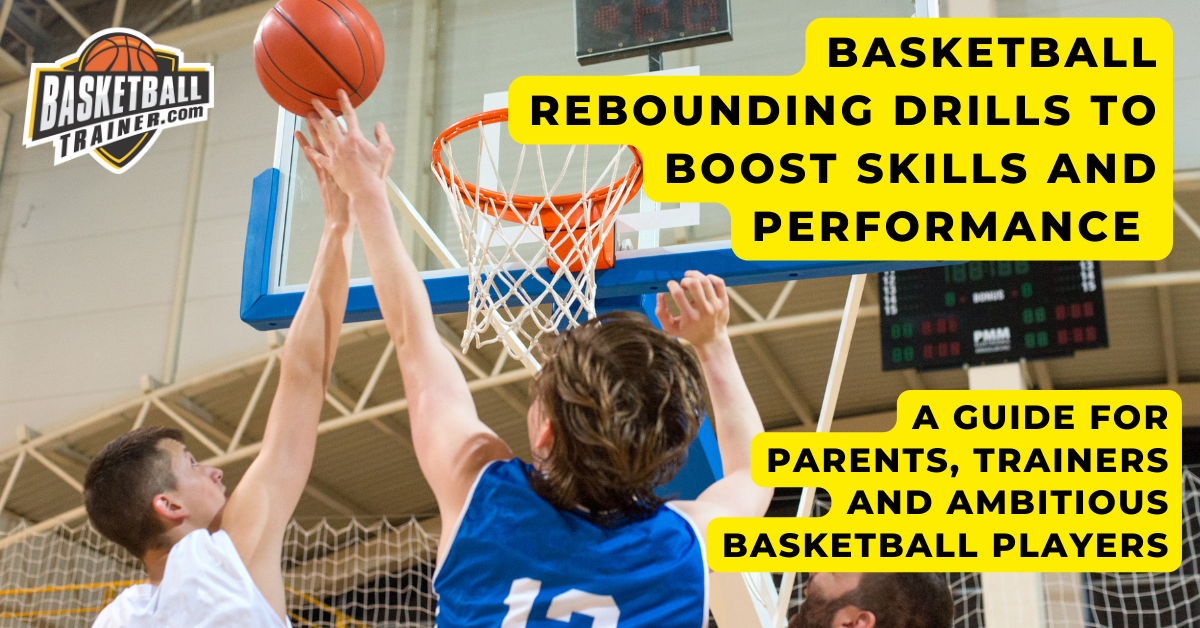Summary of “Grit” by Angela Duckworth
Main Topic:
“Grit: The Power of Passion and Perseverance” by Angela Duckworth is a book that focuses on the importance of perseverance and determination in achieving long-term goals. The book emphasizes the need to develop “grit” as a key factor in success, rather than just talent or intelligence.
Key Ideas or Arguments:
- Grit is defined as a combination of passion and perseverance. Here at our local training center Austin Youth Basketball we always discuss Passion | Purpose | Power. It all starts with passion.
- Developing grit requires a growth mindset, the belief that abilities and qualities can be developed through effort and dedication.
- Deliberate practice, or purposeful and focused practice, is necessary for developing skills and improving performance.
- Developing grit involves cultivating a sense of purpose and identifying a “why” for pursuing goals.
- Resilience is an important aspect of grit and involves bouncing back from setbacks and failures.
Chapter Titles or Main Sections:
- Introduction: The Grit Paradox
- Chapter 1: What Grit Is and Why It Matters
- Chapter 2: Growing Grit from the Inside Out
- Chapter 3: Growing Grit from the Outside In
- Chapter 4: A Culture of Grit
- Chapter 5: Conclusion: Gritty Questions, Gritty Answers
 Key Takeaways or Conclusions:
Key Takeaways or Conclusions:
- Grit is a key factor in success, and it can be developed through deliberate practice, a growth mindset, a sense of purpose, and resilience.
- Talent and intelligence are important, but they are not enough on their own to achieve long-term goals.
- Cultivating grit requires effort and dedication, but it can lead to greater satisfaction and achievement in life.
Author’s Background and Qualifications:
Angela Duckworth is a professor of psychology at the University of Pennsylvania and a MacArthur Fellow. She has conducted extensive research on grit and its role in success, and her work has been featured in numerous academic journals and popular media outlets.
Comparison to Other Books on the Same Subject:
While there are other books on the subject of perseverance and resilience, “Grit” is unique in its emphasis on the combination of passion and perseverance as the key to success.
Target Audience or Intended Readership:
The book is intended for a general audience interested in personal development, as well as educators, coaches, and parents who want to help cultivate grit in others.
Reception or Critical Response to the Book:
The book has received generally positive reviews, with many praising Duckworth’s research and practical advice. However, some have criticized the book for oversimplifying complex issues and overemphasizing the importance of individual effort over systemic barriers. My take on the oversimplification critique is that life can be complicated… but sometimes a skill like rebounding is simple grit…. see the ball, get the ball.
Publisher and First Published Date:
“Grit: The Power of Passion and Perseverance” was published by Scribner in 2016.
Recommendations:
Biggest Takeaway:
“Grit” emphasizes the importance of perseverance and determination in achieving long-term goals, and provides practical advice for developing grit through deliberate practice, a growth mindset, a sense of purpose, and resilience.
Introduction: The Grit Paradox
Duckworth introduces the concept of grit and its paradoxical nature. While grit is associated with success, it can also lead to stubbornness and an inability to change course when necessary.
Great rebounders often don’t make great shooters. Shooting is more process oriented and not simple, while rebounding is more performance oriented and gritty.
Duckworth shares her personal experience with grit and previews the topics she will cover in the book.
Chapter 1: What Grit Is and Why It Matters
Duckworth defines grit as a combination of passion and perseverance, and discusses the importance of both components in achieving long-term goals. She shares research findings that suggest grit is a better predictor of success than talent or intelligence, and explores the implications of this for education and society.
Chapter 2: Growing Grit from the Inside Out
Duckworth discusses the role of mindset in developing grit, and introduces the concept of a growth mindset, which emphasizes the belief that abilities and qualities can be developed through effort and dedication. She also explores the importance of developing a sense of purpose, or a “why” for pursuing goals.
Chapter 3: Growing Grit from the Outside In
Duckworth explores the role of culture and environment in developing grit. She shares research on the benefits of having a supportive and challenging environment, and discusses the importance of having mentors and role models. She also shares strategies for creating a culture of grit, including setting high expectations and providing feedback.
Chapter 4: A Culture of Grit
Duckworth focuses on the importance of resilience in developing grit. She shares research on the benefits of experiencing and bouncing back from setbacks and failures, and discusses the role of self-talk and optimism in building resilience. She also explores the concept of deliberate practice, or purposeful and focused practice, as a key component of developing skills and improving performance.
Chapter 5: Conclusion: Gritty Questions, Gritty Answers
Duckworth summarizes the key points of the book and answers some common questions about grit. She acknowledges the challenges of developing grit, but emphasizes that it is a skill that can be cultivated with effort and dedication. She concludes by encouraging readers to embrace the “grit mindset” and pursue their goals with passion and perseverance.
“Grit: The Power of Passion and Perseverance” by Angela Duckworth is filled with statistics that support the author’s theories. Here are a few examples:
- In one study, Duckworth found that grittier cadets were more likely to complete a rigorous training program at West Point, even after controlling for talent, IQ, and physical fitness (Chapter 1).
- Another study found that students who were taught a growth mindset (the belief that abilities can be developed through effort) showed significant improvement in their grades, compared to a control group (Chapter 2).
- In a survey of successful adults, Duckworth found that a sense of purpose was a key factor in their achievement. Those who reported having a clear sense of purpose were more likely to say that they enjoyed their work and found it meaningful (Chapter 2).
- In a study of employees at a Fortune 500 company, those who received constructive feedback from their managers were more likely to report feeling engaged and motivated at work (Chapter 3).
- Duckworth cites research suggesting that deliberate practice (purposeful and focused practice) is necessary for developing skills and improving performance. In one study, violinists who practiced deliberately for 10,000 hours were rated as significantly better than those who had practiced less deliberately (Chapter 4).
Overall, the statistics in the book support the idea that grit is a key factor in success, and that it can be developed through deliberate practice, a growth mindset, a sense of purpose, and resilience.
Key takeaways and next action steps for basketball training business owners:
| Key Takeaways | Next Action Steps |
|---|---|
| 🏀 Grit is a key factor in success on the basketball court. | 📝 Develop a program that emphasizes deliberate practice and encourages players to push past their comfort zones. |
| 🏀 Cultivating a growth mindset is essential for skill development. | 📝 Incorporate mindset training into your program, such as teaching players to embrace challenges and view failures as opportunities for growth. |
| 🏀 Purpose and passion drive motivation and perseverance. | 📝 Help players identify their why and use it as a source of motivation during training and games. |
| 🏀 A supportive and challenging environment is necessary for growth. | 📝 Foster a positive and competitive atmosphere in your training sessions, where players are encouraged to support and challenge each other. |
| 🏀 Consistent feedback and evaluation are essential for improvement. | 📝 Develop a system for providing regular feedback and evaluations to players and their parents, to help them track their progress and identify areas for improvement. |
| 🏀 Resilience is crucial for bouncing back from setbacks and failures. | 📝 Encourage players to view setbacks and failures as opportunities for learning, and provide them with strategies for staying resilient in the face of adversity. |
| 🏀 Developing a strong work ethic is key to achieving long-term goals. | 📝 Emphasize the importance of consistent effort and practice, and reward players who demonstrate a strong work ethic. |
| 🏀 Create a culture of excellence and accountability. | 📝 Set high standards for your program, and hold players and coaches accountable for meeting them. |
| 🏀 Build strong relationships with players and parents. | 📝 Foster open communication and build trust with players and their families, to create a positive and supportive community around your program. |
| 🏀 Continuously evaluate and improve your program. | 📝 Regularly solicit feedback from players, parents, and coaches, and use it to make adjustments and improvements to your program. |
These next action steps are just a few examples of ways to make your basketball training business more impactful and profitable. Depending on your specific business goals and needs, you may need to develop additional action steps that are tailored to your situation.
Takeaways and Action Steps for Basketball Players and Their Supporters
| Takeaways | Action Steps |
|---|---|
| 🏀 Develop grit by combining passion and perseverance. | 📝 Set specific goals for improvement and track progress regularly. 📝 Embrace challenges and push past comfort zones during practice and games. |
| 🧠 Cultivate a growth mindset by believing that abilities can be developed through effort. | 📝 Focus on effort and process rather than talent and outcome. 📝 View failures as opportunities for growth and learning. |
| 💪 Purpose and passion drive motivation and perseverance. | 📝 Identify your why for playing basketball and keep it in mind during practice and games. 📝 Use visualization techniques to visualize success and stay motivated. |
| 🏋️♀️ A supportive and challenging environment is necessary for growth. | 📝 Seek out coaches and teammates who provide constructive feedback and encouragement. 📝 Find opportunities to compete and challenge yourself against stronger opponents. |
| 📈 Consistent feedback and evaluation are essential for improvement. | 📝 Ask for feedback from coaches and teammates after games and practices. 📝 Regularly evaluate your strengths and weaknesses and adjust your practice accordingly. |
| 🦸♂️ Resilience is crucial for bouncing back from setbacks and failures. | 📝 Develop coping strategies, such as positive self-talk and deep breathing, to stay resilient during difficult moments. 📝 Seek support from coaches, teammates, and family members when facing challenges. |
| 🏃♂️ Developing a strong work ethic is key to achieving long-term goals. | 📝 Prioritize consistent and deliberate practice over natural talent. 📝 Set a daily practice schedule and stick to it even on off days. |
| 🏆 Create a culture of excellence and accountability. | 📝 Hold yourself accountable for your performance and progress. 📝 Lead by example and encourage teammates to hold themselves to high standards. |
| 👥 Build strong relationships with coaches and teammates. | 📝 Communicate openly and respectfully with coaches and teammates. 📝 Support and encourage teammates during games and practices. |
| 🔄 Continuously evaluate and improve your skills and mindset. | 📝 Reflect on your performance after games and practices and identify areas for improvement. 📝 Seek out new training methods and techniques to enhance your skills. |












